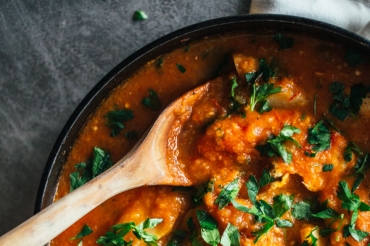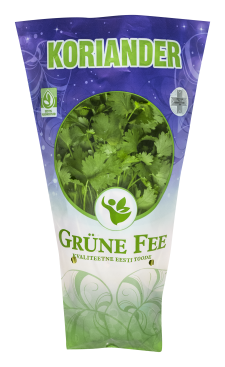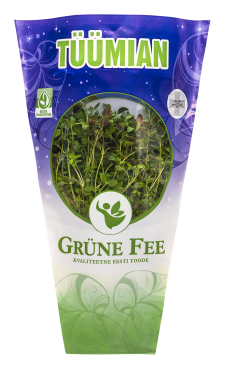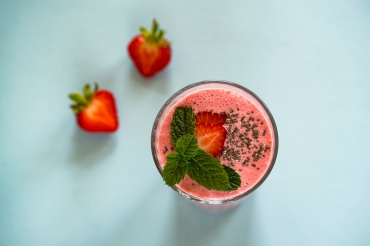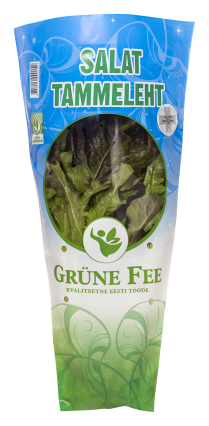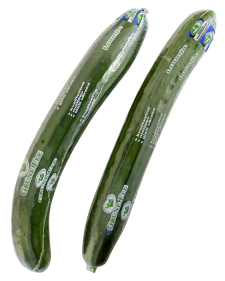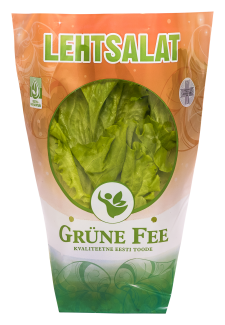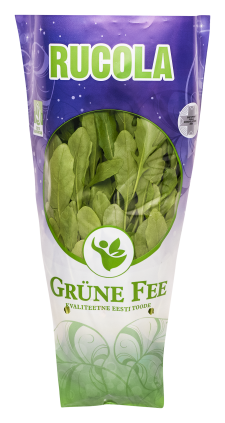Tomato stew with fried chicken and balsamic vinegar
A flavourful tomato and chicken stew made with a variety of fragrant herbs.
Use
-
Coriander
Coriander
XFresh chopped coriander (or cilantro) leaves can be added to soups, sauces, poultry or lamb dishes, and, of course, fresh salads. Fresh coriander is used similarly to parsley, but take care not to use too much, as coriander has a significantly stronger flavour.
Storage tips
Potted coriander lasts longest when kept between +4 and +8 °C. This means storage is easiest in a cool place, such as a pantry or refrigerator. For longer storage, you should also lightly water the plant once a day. You can keep the pot in a glass of water, but cool conditions are still recommended. Will also keep on the kitchen table or a window sill if watered properly, though not quite as long as when kept cool.
-
Thyme
Thyme
XThyme is an extremely fragrant plant rich in essential oils. It is mainly added to foods in dried form, but can also be used fresh. Suitable for use in all kinds of soups, pastas, stews, and sauces, as well as vegetable and egg dishes. Excellent for adding flavour to meat marinades and fish.
Storage tips
Thyme is best stored between +4 and +8 °C. This means storage is easiest in a cool place, such as a pantry or refrigerator. For longer storage, you should also lightly water the plant once a day. You can keep the pot in a glass of water, but cool conditions are still recommended. Will also keep on the kitchen table if watered properly, though not quite as long as when kept cool.
Green strawberry & basil smoothie
A refreshing green summer smoothie.
Use
-
Basil
Basil
XBasil is best used for making pesto sauce. It goes perfectly with cheese, tomatoes, and garlic, for example in wonderfully delicious tomato and basil bruschetta. Basil is a versatile herb that can be used both fresh and dried in meat, fish, cheese or pastas. It is equally great in oven-baked dishes, pasta sauces, and a variety of salads. Also used for making flavoured oils. Note! When making hot meals, add fresh basil at the end, after cooking or boiling.
Storage tips
Basil should be stored in a relatively warm place. Ideal temperature is around 14 °C. For a longer shelf life, remember to water the plant. Avoid keeping basil in the refrigerator: temperatures below 10 °C will damage the leaves and cause them to turn black relatively quickly. You should also avoid crushing or squeezing the plant, e.g., when packed between other items in a shopping bag. This will cause the leaves to go brown and any snapped edges to quickly turn black. In the winter, place your store-bought basil plant in a separate bag or wrap it in paper to prevent cold damage during transport. And remember to take it out of the car once you get home, as sub-zero degrees will cause the plant to die. The most convenient way to store basil is to place it on the kitchen table in a decorative pot. This way, it is lovely to look at and will freshen the air with its wonderful aroma. Provided the plant is kept sufficiently moist, it will keep this way for a relatively long time.
-
Peppermint
Peppermint
XThe peppermint plant is commonly used for making aromatic peppermint tea. Fresh peppermint leaves are also used for flavouring and garnishing a range of desserts. Can be used equally well for seasoning meat dishes.
Storage tips
Peppermint is slightly easier to preserve than most other herbs, as long as you protect it from the cold and water it well. While not as delicate as basil, peppermint leaves will turn dark in cool conditions. To keep it fresh longer, ensure an even temperature: temperature fluctuations reduce the shelf life of the plant. The most convenient way to store peppermint is to place it on the kitchen table in a decorative pot. This way, it is lovely to look at and will freshen the air with its wonderful aroma. Provided the plant is kept sufficiently moist, it will keep this way for a relatively long time.
Chicken wrap
A quick and healthy snack for a busy day.
Use
-
Oak leaf lettuce
Oak leaf lettuce
XThis lettuce has a dark red shade and oak leaf-shaped leaves, which make it highly decorative and great for adding a touch of colour to salads. Can also be used for garnishing sandwiches. It has a strong and slightly bitter taste. The leaves are tastiest when used young.
Storage tips
Oak leaf lettuce is best stored in a regular refrigerator, as its ideal storage temperature is between +4 and +8 °C. For longer storage, keep the plant moist.
-
Cut frillice
Cut frillice
XFrillice is a variety of iceberg lettuce with thicker and more closely packed leaves and broader stems than regular leaf lettuce. Its colour is a deeper shade of green and it is also a fair bit crunchier. Thanks to its stronger leaves, frillice stays fluffier in mixed salads and is not as quick to collapse. It is also great for making hot sandwiches. Highly decorative when used for garnishing snack platters or as the base layer of a snack tray.
Storage tips
Cut frillice is best stored between +4 and +8 °C. Keep in the refrigerator. Cut frillice is best used immediately, as even when kept in the refrigerator, it will wilt within a few days.
-
Cucumber
Cucumber
XCucumbers are great for daily consumption. Its local origin is especially valued—being grown nearby means a short supply chain, so it reaches consumers quickly and is maximally fresh.
Storage tips
Plastic-wrapped Grüne Fee cucumbers are best stored between +12 and +14 °C. Due to the high water content of cucumbers, keeping them in a warm location will slowly cause the water to evaporate and the cucumbers to become shrivelled. While cucumbers are sensitive to cold, it is still better to keep them in the refrigerator than in a warm location.
Note! Avoid storing cucumbers next to bananas or citrus fruits: this will trigger chemical reactions that can cause cucumbers to yellow and spoil rapidly. Sour varieties of apples and tomatoes can also have the same effect. Therefore, you should keep cucumbers separately from these fruits for a significantly longer shelf life.
-
Leaf lettuce
Leaf lettuce
XMild, juicy, and soft to the bite. Best used as the main ingredient in a fresh salad. Flavour with various dressings, e.g. balsamic vinegar. Top tip: adding a dash of oil helps to maximize taste experience. Leaf lettuce is perfect on top of a sandwich, in a smoothie, or for garnishing a range of dishes.
Storage tips
Potted leaf lettuce lasts longest when kept between +4 and +8 °C. This means storage is easiest in a cool place, such as a pantry or refrigerator. For longer storage, you should also lightly water the plant once a day. You can keep the pot in a glass of water, but cool conditions are still recommended. Will also keep well on the kitchen table or a window sill if watered properly, though not quite as long as when kept cool.
-
Garden rocket
Garden rocket
XThe slightly bitter and mustard-like flavour of this leafy herb makes it perfect for use in fresh salads, e.g. when combined with mild-flavoured leaf lettuce and feta or mozzarella. Excellent addition to pizzas, omelettes or steaks, as well as for making pesto. Young leaves have a flavour reminiscent of garden cress, mustard, and nuts.
Storage tips
It is best stored between +4 and +8 °C. This means rocket is easiest to store in a cool temperature-controlled space, such as a pantry or a refrigerator. For longer storage, you should also lightly water the plant once a day. You can keep the pot in a glass of water, but cool conditions are still recommended. Warmth leads to faster decay.
